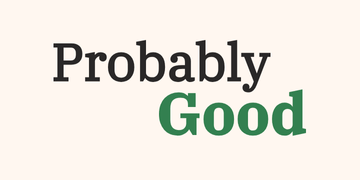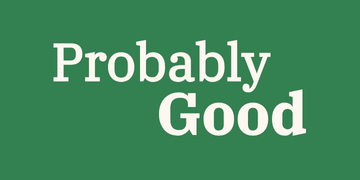If you’re going to buy a new car, you probably won’t just walk into a showroom and pick the first car that stands out. More likely, you’ll do some research: reading online forums, comparing models and features, finding something that checks all your boxes. Sure, it’s more effort, but you’ll have this car for years. What’s a couple of weeks of research here and there?
Obviously, we’re here to talk about jobs (not cars) so you can probably see where we’re going with this…
If our careers will last for around 40+ years, we should be investing a lot more time, effort, and research into figuring out our career than finding a new car.
Not everyone has the luxury of seriously considering the “social impact” of their career. If you do, your career choice is a pretty important decision. Not only will it have an outsized impact on your own life by the sheer amount of time you’ll spend working, but possibly the lives of hundreds or thousands of others too (or potentially even more!).
Figuring out the best choice for you
Career decisions involve a lot of questions. Will it make a difference? Is it important work? Will I be good at this? Is this something I would find fulfilling?
Different jobs can vary quite a lot on all these factors. Some may be incredibly impactful… while others may not help the world at all. Some may be especially suited to your strengths and interests… while others may only vaguely align with your skills.
It’s worthwhile to carefully consider these sorts of questions and fully explore your options rather than going with whatever job you get first. But how do you even go about assessing them?
When thinking about the impact you could have, a framework we’ve found especially helpful for making important career decisions is the SELF framework. It looks at four major factors and then multiplies them together to give you an estimate of its impact potential. By assessing each of them (even roughly), you can sharpen your intuition about what jobs may be good for you and good for the world. Below, we’ll explore each of the factors, and discuss how you can use these considerations to understand a job’s impact.
S – Significance of the problem
The first factor to consider when assessing a job opportunity is whether or not it would help tackle a significant problem. There are a lot of ways to think about this. You could think of a problem’s significance as the extent to which it causes unhappiness, suffering, or a lower quality of life. It could also incorporate the extent to which the problem goes against your values—for example, a problem that causes harm to the environment or that perpetuates social inequalities. Some questions to help you gain a better sense are:
- In the best-case scenario, how much would solving this problem improve the world? Would it save several lives? Reduce suffering? Protect people from harm?
- Who would be helped by solving this problem? How many people/animals are affected by it?
- Could solving one problem help solve adjacent problems or lead to second order effects?
E – Efficacy of the method or intervention
Just as problems vary in significance, solutions vary in effectiveness. And no matter how significant a problem may be, an ineffective method will do little to solve it.
An effective method is both efficient and scalable; it uses fewer resources per impact achieved. Yet even if a method is efficient, it’s not guaranteed to be successful. For example, sometimes a big policy change is the most efficient method for improving a problem. If a policy is passed, it can have an outsized impact. However, policy change involves a lot of moving parts. It’s not certain that advocating for a change will actually lead to one. It’s important, then, to consider the likelihood of a method’s success in practice.
The efficacy of an intervention takes into account both its likelihood of success and its cost-effectiveness if it’s successful.
Here are just a few questions to help you think through a method’s efficacy:
- Are there studies, impact reports, or research articles available that prove this intervention works? What exactly do they prove and do they spell out explicit estimates for how well it works? What are the differences and similarities between the study and the method in practice?
- Are there other solutions to the same problem that require fewer resources (time, money, talent, etc.)? Do these alternatives provide a better or worse outcome?
- Have people been trying and failing at this approach for a long time? Are there examples of similar projects or approaches that have/haven’t worked before?
L – Leverage of the specific role/job
The significance of the problem and the efficacy of the solution can determine the whole organization’s efforts to do good. But when considering jobs, you should also think about the specific role you would take. In other words, what does this position do within the organization? And how important is that work?
A role’s leverage can be thought of as the total influence a specific position has on the impact the organization or company is trying to make. Some roles are extremely critical to accomplishing an overall goal or solving a problem, while others may contribute to the company but not to driving the change you are aiming for.
It’s not always clear whether a role has leverage within an organization, and it often depends on the specific situation. To gain some intuition on a role’s leverage, here are a few questions to ask yourself:
- Would the organization’s progress be halted or slowed without this role?
- Is this role central to what the organization does?
- How much will this role enable others to do important work?
- Does this role directly help solve the problem we’re solving? If not, how does it indirectly contribute to progress?
- How does this role fit into the organization’s theory of change?
An important caveat to “leverage” is that it may not be a top consideration for those earlier on in their career. It’s true that many junior-level roles can still make a significant contribution to an organization. But if you ask yourself these questions and think, “Hmm my entry-level role may not have great leverage…” it could be more important to prioritize career capital (which we discuss in the next advice article, linked below!) at this stage.
F – Fit of your strengths & interests
A final important factor that influences impact is your personal fit for the role. In other words, how likely are you to excel in the role and to enjoy the work?
Even if a role is within an impactful organization doing great work, you won’t be able to do a lot of good if the particular opportunity doesn’t suit your skills or preferences. For instance, a research role could look promising on paper, but if you hate being stuck behind a computer all day, it’s unlikely you’ll be able to do your best work.
Here are a few factors worth thinking about when assessing your fit:
- Motivation: What kind of problems are you especially excited to work on? Is it important to see the direct impact of your efforts? Do you prefer an independent and autonomous environment or a more collaborative and communicative one? Do you prefer to focus on theoretical and abstract questions or solve more practical problems?
- Skill: Are you especially good at this type of work? Could you become good at it? What sort of tasks do you excel at? Do you bring useful and unique skills that most people in this role don’t have? If you’re unsure, check out some of our career profiles for recommendations on testing your fit for specific careers!
- Needs & circumstances: Are there other people in your life you need to support? Is there something important to you that you can’t see yourself compromising on? Is there a certain work-life balance that you need? Do you need a part-time or flexible schedule to accommodate other life circumstances?
Your potential impact
Once you have a rough idea of where a specific job falls on all four of the SELF factors, it’s helpful to think of them as multiplying factors. Not every factor has to be extremely high for a role to be impactful, but if any one factor seems especially low, your overall impact could be low. Even if you’re working on a significant problem, for example, you probably can’t make much of a difference if the solution is ineffective or the role isn’t a good fit for you.
To use the framework, you don’t need to have a precise rating for each factor. Even a general sense can help you make some comparisons. What’s important is that you structure your thinking in a way that helps you identify exceptional opportunities—while looking out for any underlying issues that could undermine the job’s potential impact.
Other ways to make an impact with your career
For some, pursuing a high-impact role is the best way to use their career for good. However, it’s not the only way to make a difference. One promising alternative is to donate a portion of your salary to effective charities and important causes—a strategy known as effective giving.
Many of the world’s most effective charities are incredibly efficient at using donations to save lives or tackle major issues. By effectively giving a portion of your salary to these charities, you can have a similar, or even greater, impact than some “direct-impact” careers.
For example, the average annual income of a person living in the United States is about $60,000. By donating 10% of their income to effective charities such as the Against Malaria Foundation, the average American could save dozens of lives over the course of their career. If you’re not quite in the position to donate 10%, you might be surprised at just how much of a difference donating 1% of your income could make. For instance, by donating just $50 a month, your donation could deliver 25 anti-malaria bed nets or provide 600 vitamin-A supplements to vitamin-deficient children!
Depending on your field, skills, and experience, effective giving can be a promising way to align your career ambitions with your moral motivations. It’s an approach that is relevant to a wide range of people with vastly different skill sets. Additionally, its value is not likely to meaningfully drop as more people pursue it. A lot of different organizations need more funding, and this approach gives you the flexibility to give to any cause. And, of course, if you’re in a position to earn an even higher salary, you could potentially help save several hundreds of lives with donations. Dive deeper into earning to give and learn more about effective giving.
What’s next?
This is the third article in our core career advice series. In the next one, we’ll think about what would happen if you didn’t take a job—and how that could affect your social impact.

